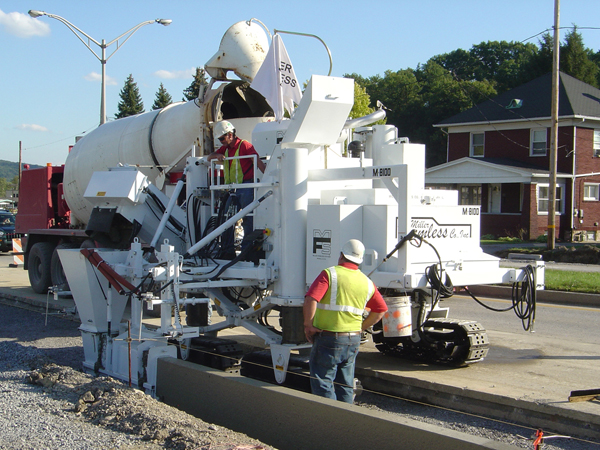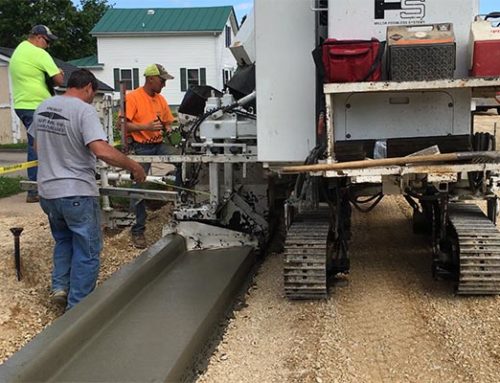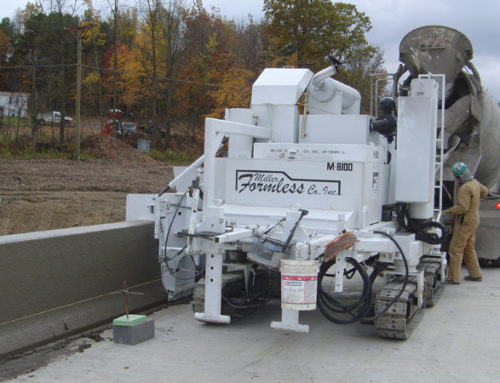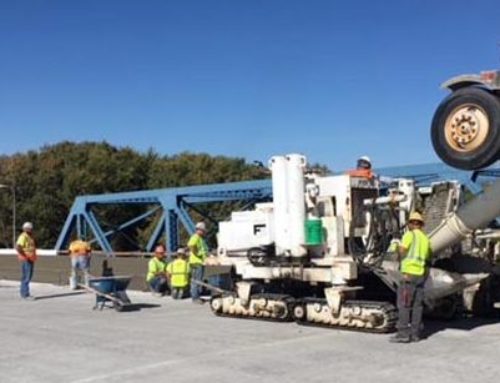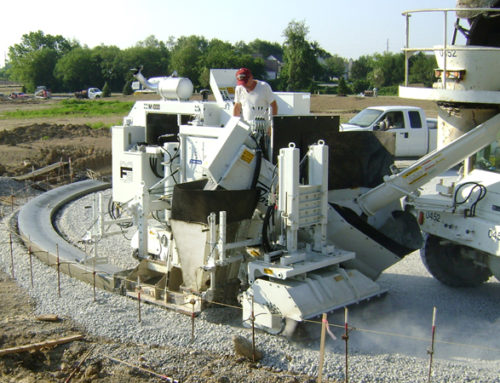We are all aware on the importance of safety in our lives. Safety in the work place is vital to our personal wellbeing and business health. Slipform Machines are designed to produce quality concrete curb, barrier, or paving in an efficient and safe manner. To keep the machines operating safely at this level, a program of regular maintenance, inspection, and record keeping, must be introduced and implemented.
In addition to injury protection from a safety plan, additional value can be realized from a plan:
- Decreased lost time
- Increased production – crew not stressed about safety concerns
- Retain operator and build team
- Image to the public of company’s safety concern
The first step is to build a plan. Using the machine manual, put together a list of possible danger zones, specific components, and areas which need to be put on the inspection report. The process needs to start every morning the machine is used. The operator needs to start going over his mental checklist as he arrives on the job. These should include jobsite conditions, machine prep (fueling, greasing, & checking fluids), machine setup (mounting mold, installing vibrators, putting on line), and being aware of any routine changes (new hires, different ready-mix supplier, new components installed on machine).
When approaching the machine, the operator needs to notice any indications of trouble, such as oil spills, unusual leaning or level of machine, or physical damage to the machine, covers, or guards. Any of these should be checked prior to starting the machine, then the following checks should be made:
- Fueling Procedure – Fuel fill location and type of fuel conspicuously labeled, engine turned off while fueling, spills cleaned up
- Hot Surfaces – Sturdy guards installed, marked with conspicuous ISO labels
- Wet/Slippery Surfaces – Identify areas prone to become wet/slippery and marked with conspicuous ISO labels
- Concrete Splatter – Areas around machine prone to receiving concrete splatter from ready mix truck identified and marked with conspicuous ISO labels
- After starting the machine according to the procedure in the manual, all systems need to be operated and verified to be working correctly. These include:
- E-Stops – Location and function verifying all machine movement stops upon pushing any e-stop and won’t resume until e-stop position returned to normal and operator re-set switch pushed
- Backup Alarm – Location and function
- Track Drive Engagement – Correct direction with lever movement, positive stop at neutral with brake engagement, no binding or excessive hyd pressure, Track Guards installed
- Rotating Auger or Cutter – Correct direction with lever movement, positive stop at neutral, sturdy guards installed, marked with conspicuous ISO labels
- Elevation Lock – Raise/Lower valve control working with lock engaging properly to stop any movement or drifting
- High Pressure Hoses – Retention devices installed, marked with conspicuous ISO labels
- Leaks – Must be repaired immediately, can create slippery areas for crew, early indication of potential hose or fitting failure
- Sound – Functioning Muffler or Suppressor installed, Sound Shields and Enclosure Doors installed, marked with conspicuous ISO labels
- Pinch Points – Sturdy guards installed, marked with conspicuous ISO labels
Everyone on the job must be informed about areas around the machine which are or could become danger zones during the day.
- Visibility – Identify hard to see areas around the machine, both for operator and crew members working near the machine. If you can’t see the operator, he can’t see you.
- Crush Zone – Identify areas around the machine that because of machine or concrete truck movement, can become crush zones very quickly.
Responsibilities for checking, maintaining, and reporting each part of the plan need to be assigned. The operator and shop mechanic need to work together to maintain the safety features of the slipform machine. Quick fixes done during the day, must be permanently repaired after the end of each work day. After washing the machine, a quick inspection of the ISO labels should be done to verify that none have been removed or covered up by dirt, grease, or concrete splatter.
Maintaining the safety functions and components of the machine goes hand in hand with the reliability of the slipform machine. Any suggestions or observations from the operator, mechanic, or crew, need to be noted and checked out. Machine safety affects everyone.



